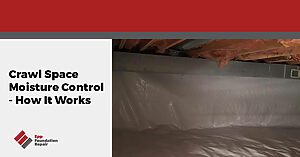Looking for information about leveling a foundation? If so, you’ve landed on the right page because that’s what we’re going to review in this article. We’ll go over how foundations are leveled, why foundations sometimes need to be leveled, signs your home’s foundation might require leveling and more.
Leveling a Foundation via Underpinning
Leveling a foundation via underpinning refers to the process of strengthening and stabilizing an existing foundation that has become compromised due to differential settlement or when a foundation settles into the ground unevenly. Differential foundation settlement puts a lot of stress on a foundation, and if it isn’t promptly corrected, it can lead to severe structural damage.
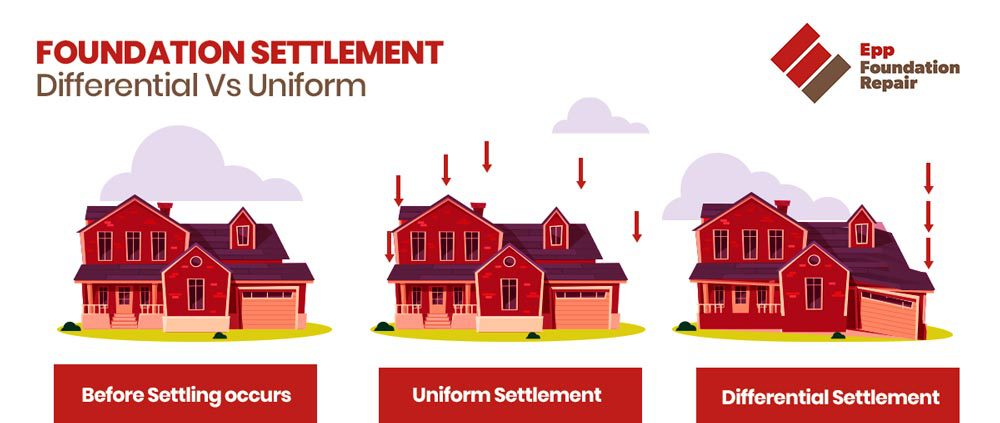
Underpinning involves excavating and reinforcing the foundation by adding additional support. This extra support is achieved using piers (push, helical, slab, drilled concrete) to improve the foundation’s load-bearing capacity and ensure long-term stability. The chosen pier solution depends on the foundation’s specific needs and the area’s soil conditions.
Underpinning is a highly specialized process that should only be carried out by an experienced foundation repair contractor. For more information, see What Is House Underpinning?
Why Would a Foundation Need to Be Leveled?
As noted above, the most common reason a foundation needs to be leveled is differential settlement, and the leading cause of differential settlement is expansive soil. This is clay-rich soil that expands as it absorbs moisture and then shrinks as it releases moisture and dries out. This swelling and shrinking, which is usually seasonal, creates movement in the ground under the foundation, and this is what eventually leads to differential settlement.
Other causes of differential settlement include, but aren’t limited to, the following:
- Inadequate site preparation – Another common cause of differential settlement is inadequate soil preparation before construction. If soil isn’t adequately compacted before construction, the structure can settle unevenly into the ground over time.
- Erosion-prone soil – Erosion-prone soil refers to soils easily worn away by groundwater. When this happens, the soil becomes less compact and loses its strength. As a result, voids form under the foundation. If the foundation settles into the voids, differential settlement will result.
- Seismic events and other natural disasters – Anything that causes the ground under the foundation to move can cause differential settlement.
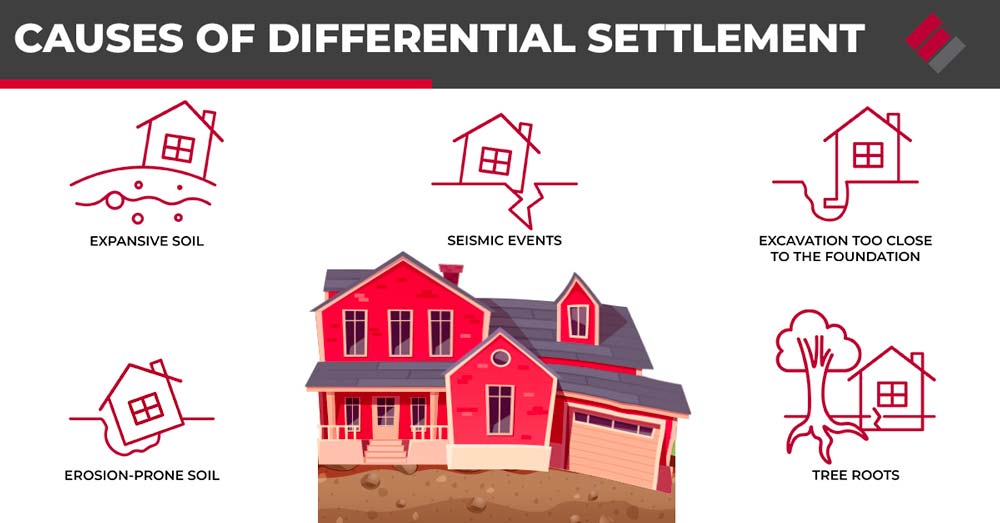
Signs a House Might Need Foundation Leveling
Common signs of differential settlement include the following:
- Cracks in walls, floors, and ceilings
- Doors and windows that no longer open or close properly
- Tilting chimneys
- Porches that are pulling away from the house
- Uneven floors
- Stair step cracks in brick or masonry
- Gaps between walls and the floor or ceiling
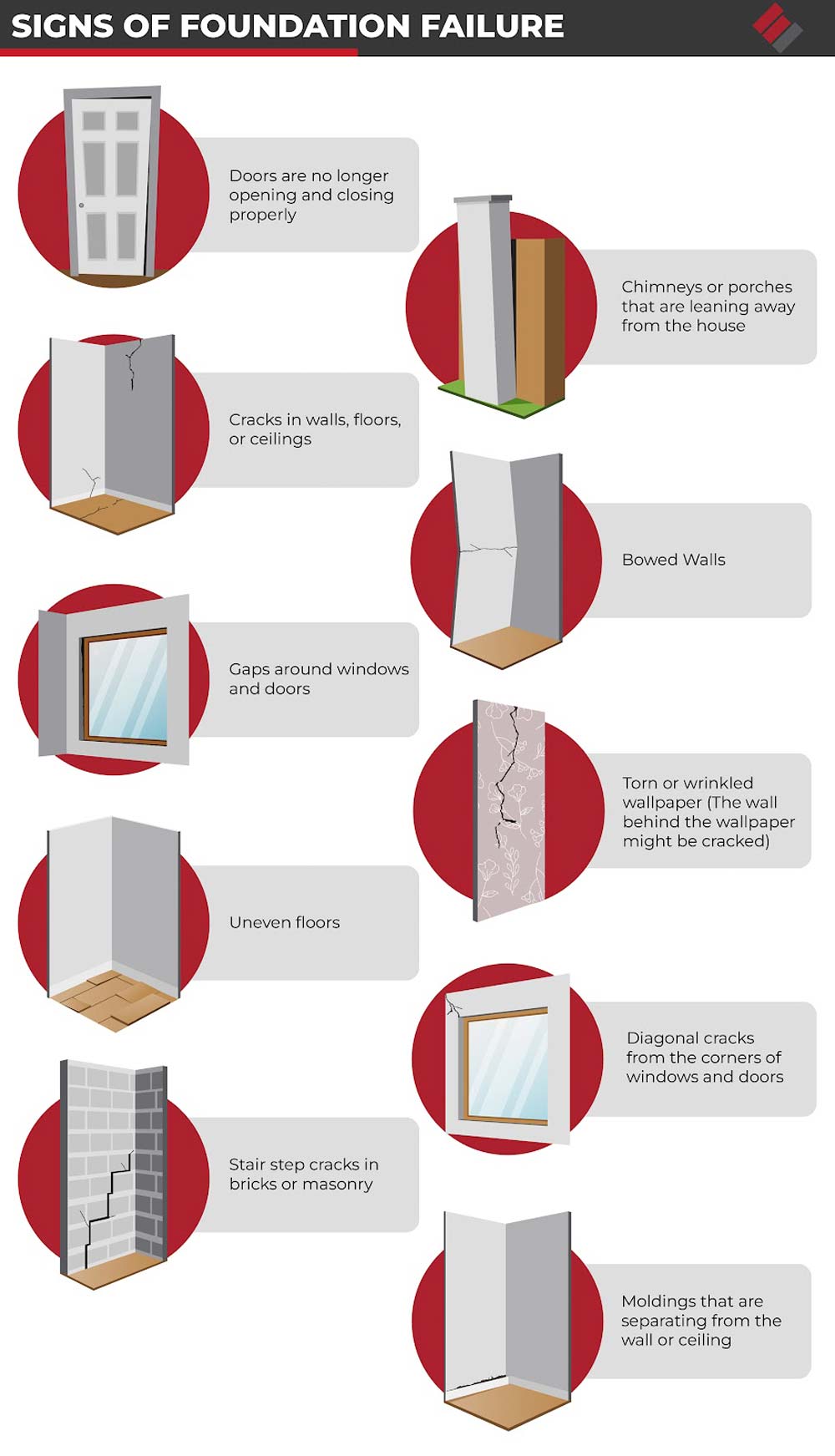
If you see any of the above or anything else that seems suspicious, contact a foundation repair contractor right away. It’s critical to address differential settlement promptly to prevent further damage and ensure your home’s structural integrity.
Who Do I Need to Contact if I Suspect My Home Has a Foundation Problem?
If you suspect your home has a foundation problem, it’s essential to contact an experienced and licensed foundation repair contractor right away. They are trained to identify and evaluate foundation problems and will be able to recommend the most appropriate repair solution. Whatever you do, don’t ignore the issue. Foundation problems worsen over time, and you’ll pay more for the repair if you wait. Act fast and save money.
Is There a Difference Between Leveling a Foundation and Repairing a Foundation?
Leveling a foundation via underpinning is a repair solution that corrects differential settlement.
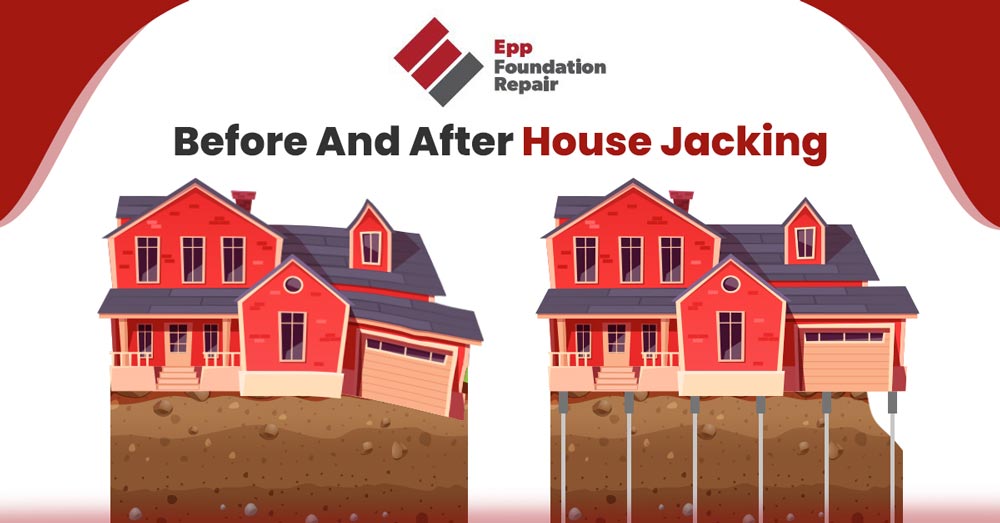
What About DIY Foundation Leveling?
Foundation leveling is not a DIY job. It requires specialized knowledge and expertise that only experienced foundation repair contractors possess. Attempting to do it yourself without the proper knowledge and tools can lead to further structural damage, which may result in even more costly repairs in the future.
Foundation leveling is also subject to strict regulations enforced by local authorities. Failure to comply with these regulations can result in serious consequences, such as hefty fines or legal action. Therefore, it’s critical to let a professional foundation repair contractor handle this repair. They possess the necessary skill set, knowledge, and experience to handle any complexities that may arise, ensuring that the foundation is strengthened correctly and safely without any danger to life and property.
Does It Cost a Lot of Money to Level a Foundation via Underpinning?

The cost of foundation underpinning depends on various factors, including the size and condition of the foundation, the underpinning system used, ease of access, and your geographical location.
The only way to know how much it will cost to level your home’s foundation is to contact an experienced foundation repair contractor and ask for an evaluation and a repair estimate.
How Long Does It Take to Level a Foundation?
Leveling a foundation via underpinning usually doesn’t take more than a few days. Of course, every foundation is different, so it may take longer in some cases.
Tips on How to Help Prevent Differential Foundation Settlement
Fortunately, homeowners can take several proactive measures to prevent differential foundation settlement. Note that most of these involve controlling groundwater around the foundation. This is because most foundation problems are caused by either too much moisture in the ground around the home or not enough.
- Regrade the yard around the foundation – One of the most effective ways to prevent foundation problems is to ensure groundwater is directed away from your home’s foundation. This can be accomplished by regrading the yard around your house. Ideally, the ground should slope away from your foundation at a grade of at least 6 inches over the first 10 feet. This will prevent water from pooling around the foundation and causing damage.
- Clean gutters regularly – When gutters become clogged with leaves, twigs, and other debris, water can overflow, spill down the side of the house, and soak the soil around the foundation. This can cause expansive soil to expand and contract, leading to cracks and other damage.
- Use downspout extensions – Downspout extensions direct water away from your home before release, reducing the amount of water that comes into contact with your foundation. This can be especially important if your yard doesn’t have a natural grade that directs water away from your foundation.
- Install a drain tile system – A drain tile system is a network of perforated, underground drainage pipes around your home’s foundation. These pipes collect water and direct it away from your home. This can be particularly helpful if you live in an area with heavy rainfall or your home is in a low-lying area prone to flooding. For more information, see What Is Drain Tile?
- Keep large trees away from the foundation – Trees can provide shade and enhance your home’s curb appeal but can also cause foundation problems if planted too close to your home. As trees grow, their roots can extend under the foundation, where they can cause trouble. Therefore, it’s important to keep large trees at least 20 feet away from your home’s foundation.
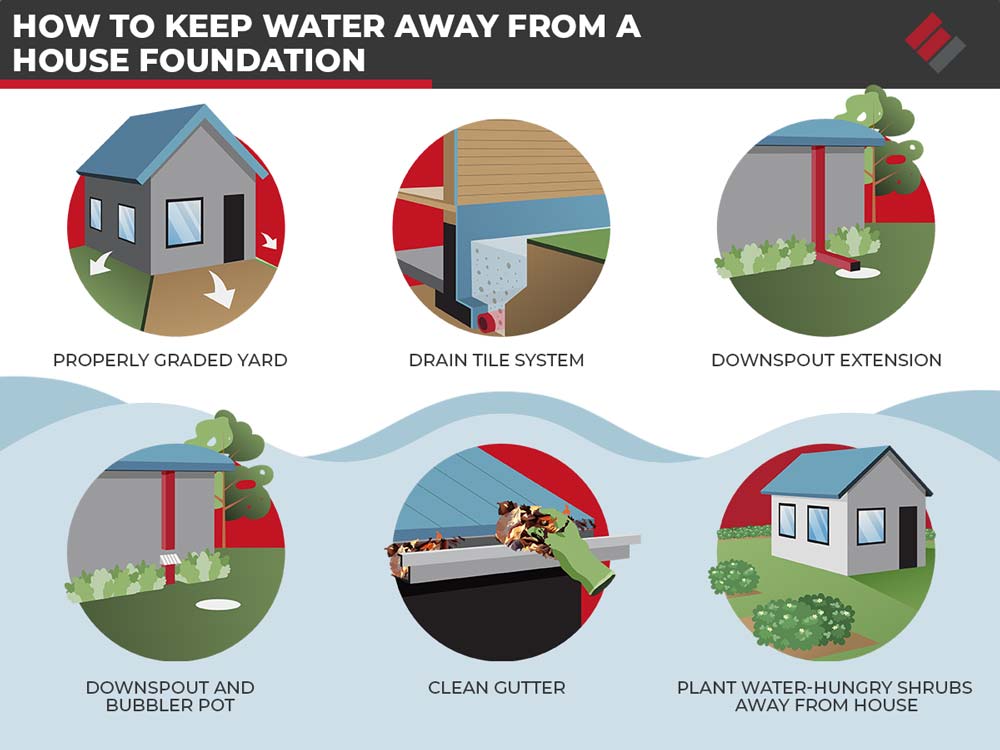
If you’re concerned your home’s foundation might need leveling, contact us today to schedule a foundation evaluation. If we find a problem, we’ll give you a repair estimate. We serve areas in four states: Nebraska, Iowa, Kansas, and Missouri.





